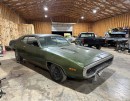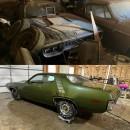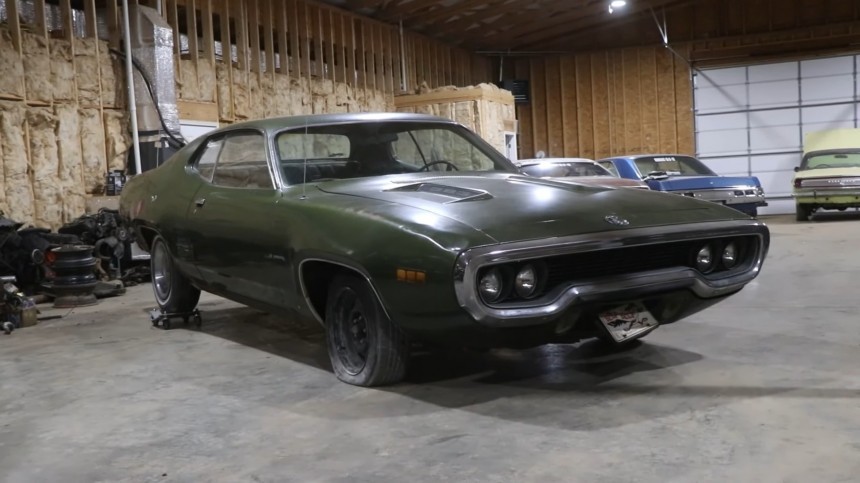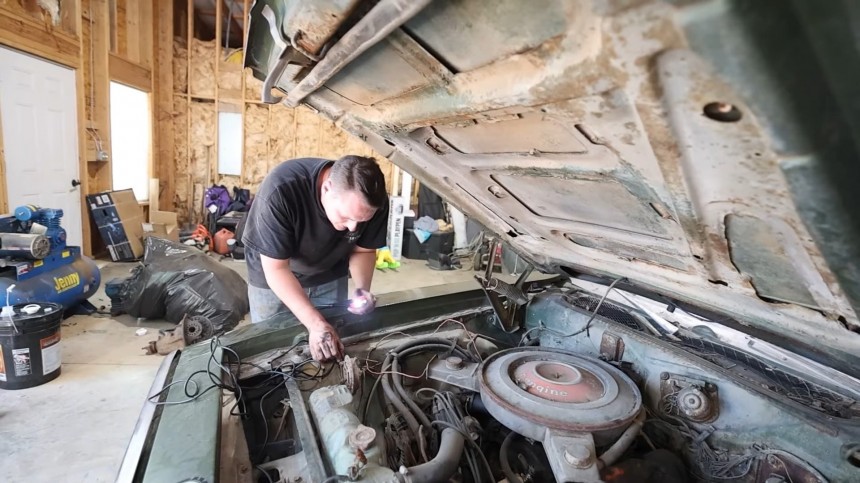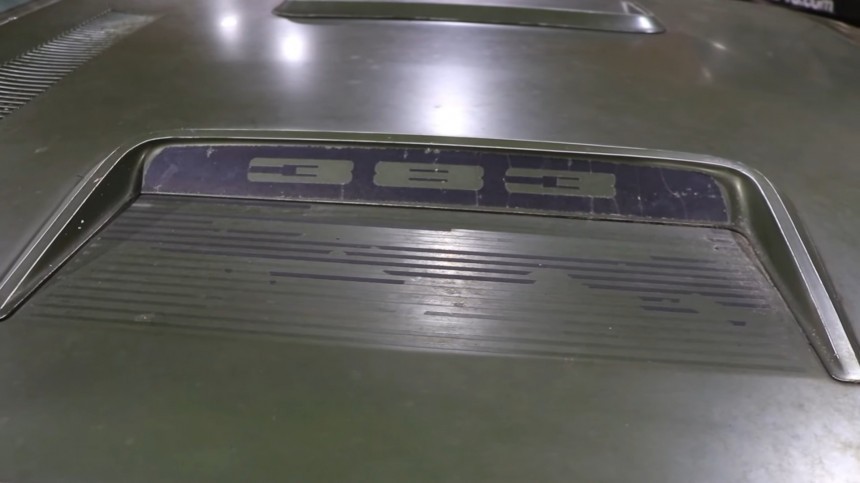The transitional year of 1971 is a foggy mix of ‘it all ended by then’ and ‘it was still good fun’ as far as car nuts segregate the muscle car age from the doomsday decades that followed. The cars from that particular year weren’t at the same all-time high level as those 1970 mythical heroes (the Hemigod doesn’t count). Still, they weren’t the slush boxes of the Malaise either). 1971 was also when the Road Runner changed generations, face, and attitude, but it ended up as a sales flop.
When it was launched in 1968, the Plymouth Road Runner was about as conspicuous as a set of wrenches in the engine assembly building of one of Chrysler’s car factories. Low-key, low-budget, no-frills, big-punch was the basic recipe for building the rowdy muscle car for the masses. It fared well in the sales charts, and after three model years, it got a style upgrade.
The second-generation Road Runner followed the Mopar design trend and gained a sleeker profile and a signature front end but also lost all body styles, short of the hardtop. 1970 was the epitome of styling performance for the moniker (hardtop, coupe, convertible, and Superbird), so it was a surprise that the successor didn’t follow the trend.
From the 43,404 units sold in 1970, the Plymouth muscle car scored a suicide-inducing 70% drop to an abyssal 14,218 vehicles. It’s hard to pinpoint a culprit today; after 54 years since the revamped Road Runner hit the showrooms, styling wasn’t one of them. It could be a combination of factors – insurance premiums, customer taste shifts, better offers from the rivals, and whatnot, but a 1971 Plymouth Road Runner survivor is not one’s everyday, regular, normal find.
They are still out there – some in better shape than others. However, you'd have to be lottery-winning lucky to come across one in the factory-original state still able to run and drive, especially if the said car was to be rescued from a 35-year slumber under a pile of stuff in a garage. Am I getting a little too specific? Check out the video below: Dylan McCool is a YouTuber with a knack for classics – he rescues, repairs, and restores them to whatever extent he can.
His latest car is a green-on-green 1971 Plymouth Road Runner. It doesn’t appear to have any major flaws cosmetically and mechanically, making it the perfect candidate for a restoration project. The car was bought at an auction several months ago and is one of the 13,664 built for the model year.
In a previous paragraph, I cited a different number – the 14k+ value includes Canadian market production. Also, add the 1920-odd Superbirds built in 1970 (the exact number is still a debate, and it will probably remain that way forever).
Dylan’s garage rescue has been sitting in a weather-fending garage since 1989, and it hasn’t run in as many years. It’s one of the 11,682 Road Runners powered by the signature Chrysler 383 V8, the smallest big-block in the Mopar lineup. However, the 6.3-liter motor is not the famous ‘383 Road Runner’ eight-cylinder plant engineered specifically for the cheap muscle car of the first generation.
When the nameplate first hit the showrooms in 1968, there were three instances of the 383-cubic-inch V8 in the Mopar brochures: the two-barrel Commando, the four-barrel Super Commando, and the four-barrel Road Runner, which was eponym-exclusive.
Only the latter was available with the Plymouth muscle car—it was offered as standard, with the 426 Hemi as the alternative in the debut year and 1969. A mid-year upgrade made in '69 saw the 440 Super Commando and its trio of dual-pot carburetors joining the fray.
By 1971, however, things were beginning to change: compression ratios dropped (again, after the 1970 deprecation), and regular fuel was now the norm for some performance engines. The 8.5:1 squeeze from the Road Runner’s 383-cube motor could only deliver 300 hp (gross rating – the as-installed GPA was a meager 250 hp).
That's one major downhill slide from the 335 hp available in the first-gen editions. The muscle was beginning to get sore – remember that 1971 was the last performance of the Street Hemi. This fabulous 426 big-inch brawler stayed true to its 425-hp rating in all six years of production.
Dylan’s Road Runner appears in good condition overall. He doesn’t disclose the mileage, but its relatively rust-free body (minus the trunk extensions behind the rear wheels) indicates the car had a good life between 1971 and 1989. That’s when it was parked—and forgotten. It was not completely abandoned but was not given any attention either.
Except for minor bumps on the body panels, the car is straight and clean, and the 383 plays ball and turns freely by hand. Not the distributor, though – that takes a little tickling to get sparks, but once it’s done, the venerable big-block fires up and burbles like it's ready to do battle at the stoplight once more.
The rear end is a standard 3.23 – not the most performing rear end by far, but it got the job done by putting the gross 410 lb-ft (556 Nm) to the ground. The net torque was 325 lb-ft (441 Nm), and the three-speed TorqueFlite is one of the few options installed on this second-generation Plymouth Road Runner ($237.50).
Almost 60% of the Road Runner production run came with the automatic box (7,952 units), despite the four-speed manual being available for $30 cheaper. The regular transmission was a three-pedal three-speed gearbox, but that’s not exactly befitting a muscle car that brought heavy-duty brakes and suspensions as standard but still frowned upon such amenities as power steering, air conditioning, power windows, or bucket seats. Another quirky feature of this old survivor is the pair of racing mirrors (one on the driver’s door, the other in the trunk), which were also optional at extra cost.
The second-generation Road Runner followed the Mopar design trend and gained a sleeker profile and a signature front end but also lost all body styles, short of the hardtop. 1970 was the epitome of styling performance for the moniker (hardtop, coupe, convertible, and Superbird), so it was a surprise that the successor didn’t follow the trend.
From the 43,404 units sold in 1970, the Plymouth muscle car scored a suicide-inducing 70% drop to an abyssal 14,218 vehicles. It’s hard to pinpoint a culprit today; after 54 years since the revamped Road Runner hit the showrooms, styling wasn’t one of them. It could be a combination of factors – insurance premiums, customer taste shifts, better offers from the rivals, and whatnot, but a 1971 Plymouth Road Runner survivor is not one’s everyday, regular, normal find.
His latest car is a green-on-green 1971 Plymouth Road Runner. It doesn’t appear to have any major flaws cosmetically and mechanically, making it the perfect candidate for a restoration project. The car was bought at an auction several months ago and is one of the 13,664 built for the model year.
In a previous paragraph, I cited a different number – the 14k+ value includes Canadian market production. Also, add the 1920-odd Superbirds built in 1970 (the exact number is still a debate, and it will probably remain that way forever).
When the nameplate first hit the showrooms in 1968, there were three instances of the 383-cubic-inch V8 in the Mopar brochures: the two-barrel Commando, the four-barrel Super Commando, and the four-barrel Road Runner, which was eponym-exclusive.
Only the latter was available with the Plymouth muscle car—it was offered as standard, with the 426 Hemi as the alternative in the debut year and 1969. A mid-year upgrade made in '69 saw the 440 Super Commando and its trio of dual-pot carburetors joining the fray.
That's one major downhill slide from the 335 hp available in the first-gen editions. The muscle was beginning to get sore – remember that 1971 was the last performance of the Street Hemi. This fabulous 426 big-inch brawler stayed true to its 425-hp rating in all six years of production.
Dylan’s Road Runner appears in good condition overall. He doesn’t disclose the mileage, but its relatively rust-free body (minus the trunk extensions behind the rear wheels) indicates the car had a good life between 1971 and 1989. That’s when it was parked—and forgotten. It was not completely abandoned but was not given any attention either.
The rear end is a standard 3.23 – not the most performing rear end by far, but it got the job done by putting the gross 410 lb-ft (556 Nm) to the ground. The net torque was 325 lb-ft (441 Nm), and the three-speed TorqueFlite is one of the few options installed on this second-generation Plymouth Road Runner ($237.50).
Almost 60% of the Road Runner production run came with the automatic box (7,952 units), despite the four-speed manual being available for $30 cheaper. The regular transmission was a three-pedal three-speed gearbox, but that’s not exactly befitting a muscle car that brought heavy-duty brakes and suspensions as standard but still frowned upon such amenities as power steering, air conditioning, power windows, or bucket seats. Another quirky feature of this old survivor is the pair of racing mirrors (one on the driver’s door, the other in the trunk), which were also optional at extra cost.

